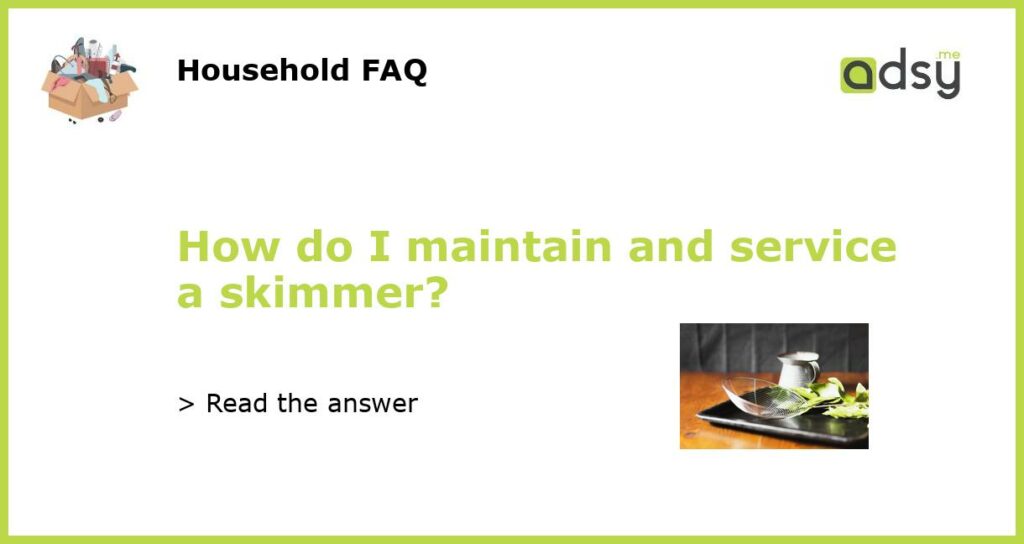What is a skimmer and why is maintenance important?
A skimmer is an essential component of a swimming pool or spa system that helps to remove debris from the surface of the water. Without regular maintenance and servicing, a skimmer can become clogged or inefficient, resulting in poor pool water quality and potential damage to the pool equipment.
Step 1: Clearing debris from the skimmer basket
The first step in maintaining a skimmer is to regularly check and clear the debris from the skimmer basket. The skimmer basket is located within the skimmer housing and is designed to catch leaves, bugs, and other debris before it enters the pool filtration system.
To clear the skimmer basket, simply remove the skimmer lid or cover, lift out the basket, and empty its contents into a trash bag or compost pile. It’s important to wear gloves during this process to protect your hands from any sharp or dirty objects.
Step 2: Checking and cleaning the skimmer weir
The skimmer weir is a flap or door located at the mouth of the skimmer that helps to capture debris and prevent it from floating back into the pool. Over time, the skimmer weir can become stuck or clogged, affecting the skimmer’s performance.
To check the skimmer weir, simply push down on it to ensure that it moves freely. If it feels stuck or difficult to move, it may need to be cleaned or replaced. To clean the skimmer weir, use a soft brush and mild detergent to gently scrub away any debris or buildup. Rinse thoroughly with water before reattaching it to the skimmer housing.
Step 3: Inspecting and cleaning the skimmer throat and pipe
The skimmer throat is the opening that connects the skimmer to the pool’s filtration system. Over time, this throat can become clogged with leaves, dirt, and other debris, restricting water flow and reducing the skimmer’s effectiveness.
To inspect and clean the skimmer throat, you will need to turn off the pool pump and remove the skimmer lid or cover. Use a flashlight to visually inspect the throat for any visible blockages. If you see any debris, use a pool skimmer net or a long-handled brush to remove it.
If the skimmer throat is severely clogged or the blockage is difficult to reach, it may be necessary to call a professional pool cleaner or service technician for assistance. They have the tools and expertise to thoroughly clean the skimmer throat and restore proper water flow.
Step 4: Testing and adjusting the skimmer suction
The skimmer suction is the amount of suction power that is being drawn from the skimmer and back to the pool’s filtration system. It’s important to regularly test and adjust the skimmer suction to ensure optimal performance.
To test the skimmer suction, you will need a pool skimmer flow meter or a similar device. Attach the flow meter to the skimmer suction line and monitor the reading. The optimal skimmer suction range is typically between 30-40 cubic feet per minute (CFM).
If the skimmer suction is below the recommended range, it may indicate a blockage or a problem with the pool pump. In this case, it’s best to contact a professional for assistance. They can diagnose the issue and suggest the necessary repairs or adjustments.
Step 5: Regular skimmer maintenance and inspection
In addition to the steps mentioned above, it’s important to regularly inspect and maintain the skimmer to ensure its longevity and efficient performance. This includes checking for any cracks or damage to the skimmer housing, lid, or cover, as well as ensuring that the skimmer seal is intact.
It’s also a good idea to periodically clean the skimmer housing and lid with a mild cleaner to prevent buildup and maintain the skimmer’s appearance.
By following these steps and conducting regular maintenance and servicing, you can ensure that your skimmer continues to operate effectively and keep your pool or spa clean and inviting.






